"ISEN VI is the start of a new era of peace and prosperity .. [what] we've pioneered make it possible to build worlds to any pacification" -
Kano Dollar being interviewed.
In-between their many adventures together both on and off the screen, the Twelfth Doctor and Clara face a new challenge to overcome in this hotly anticipated comic strip from Titan. The time-travelling duo are visiting a planet with great beauty and remarkable animal lifeforms - however almost all of it is not as nature originally intended; hence the title of this story. Some confusion and embarassment is immediately felt by Clara as she comes fully dressed for an alpine break away from her stressful teaching duties on the specialist snow planet of ISEN VI. Instead she and her alien companion have happened upon a totally transformed planet which is now very much tropical in its temperature setting. As investigations unfold and those at work on the terroforming become known to the captivated Doctor, it becomes clear that something rather more sinister is bubbling along under the lush exteriors of the planet.
The beginning 'pretitles' are a good mix of dark humour and a truly unnerving and mysterious monster presence. Although the victim is a bit up himself he still seems like a proper heroic type who is relatable. He not only is killed off heroicly, he also has his name misremembered (something a lot of us have had to accept in our Earthbound lives!). And the impact certainly registers more than with some 'red shirt' types which litter science-fiction/fantasy stories.
The art and colouring is overall terrific, and coupled with an engaging story this is as good an opening issue to a series as one could wish for. It is fully aware of the ongoing Moffatt/Capaldi run that so many of fans and general TV viewers are enjoying presently, with direct mentions of 'Into the Dalek' , 'Robin of Sherwood' and 'The Caretaker'. By having some distinguishable references, which need not trouble new readers who perhaps do not watch much TV 'Who' in the first place, there is a finely judged regard for Doctor Who as an ongoing franchise. Dialogue is very natural and strong and avoids some of the comic book indulgences which bother me every so often in other comic book lines from the likes of Marvel and DC that I also read.
Capaldi's lined and somewhat irregular face means that he translates well to the artistic licenses afforded in comic book format. As in most of the Tv episodes there is a bit of the aloof detective at work and he doesn't mince his words. Once the overall plot/situation presents itself to the Doctor he takes charge quickly and most convincingly if still lacking some charm. In that regard, the comic is consistent with the opening text intro. Once the situation presents itself to doctor he takes charge quickly and most convincingly - if lacking some measure of charm. As the text intro on the first page informs us, he wants people out of the way in order to just get on and save them.
Nonetheless for some reason he comes off a bit more likeable and carefree in general. The lack of Capaldi's domineering intonations may be a factor as readers have the option of bringing this comic medium to full life in their own way. Jenna Coleman's protagonist is perhaps a little too bland and lacks the sparkling brown eyes but still functions as a perky and decent-minded counterpoint to our inimitable Gallifreyan hero.
There is a generous helping of comedic altercations between these two, who now know each others quirks and foibles well enough. During one particular verbal tug of war, the latest version of the Doctor makes a pointed remark at his most immediate predecessor and his love for bow ties; perhaps echoing the doomed Tenth's Doctor's mutterings of a 'new man sauntering away'. Clara is not to be bulldozed of course, and gets in a good dig at the Doctors lifestyle of not needing money and not really being a part of Earth society. She could have a case that he lacks ties to identifiable society out there in the cosmos for that matter. But the Doctor's supreme confidence is all on show throughout this opening chapter. Along with the vanity of calling himself sophisticated and well dressed, he is quite keen to mention Scotland in passing for the most tenuous of reasons.
There is also a sense of competition once the two get on with the task of identifying their new surroundings. The Doctor gets to brandish a specialist magnifying glass, whilst Clara thinks she has coined a new word for a strange new species - but loses her skiing bobble hat in the process to the said 'skunkeys'.
Supporting characters are also commendable here. Natural allies appear in the form of Professor Spector (who has a hairdo similar to Gary Oldman's Zorg in 'The Fifth Element') and her team who work on various sectors of ISEN VI, of which the humanoid/ acquatic Dr Scrofolus is most notable. There is a real sense that we are witnessing a typical day in the lives of this scientific team - until things come to a head, all too typically dovetailing with the TARDIS crew's arrival.
More obstructive is the self-absorbed and greedy magnate Kano Dollar - who is not too impressed by the Doctor's assertiveness and gets to utter that much loved line "Doctor Who?" as a result of his skepticism . There is a media correspondent character who only pops up to deliver exposition on this fat cat/ corporate figure and how ISEN VI has changed but even such a minor character is quite well done by the creative team of Morrison and Taylor.
There seems to be a clear villain in the form of 'Hyperios' and secondary monsters in the form of quirky robots who are vulnerable to the thrall of this mysterious fiery entity. With the nuisance factor of deplorable businessman Kano potentially getting in the way in later chapters, the Doctor has his hands rather full indeed.
So the very early signs of this new comic are most promising. Whilst Titan's other new Doctor Who lines have demonstrated various strengths (particularly the Tenth Doctor line), this would appear to be the ace in the pack.
**
Extras are in the form of a large gallery of alternate covers, with the most notable variants being granted full page sizes.
Kano Dollar being interviewed.
In-between their many adventures together both on and off the screen, the Twelfth Doctor and Clara face a new challenge to overcome in this hotly anticipated comic strip from Titan. The time-travelling duo are visiting a planet with great beauty and remarkable animal lifeforms - however almost all of it is not as nature originally intended; hence the title of this story. Some confusion and embarassment is immediately felt by Clara as she comes fully dressed for an alpine break away from her stressful teaching duties on the specialist snow planet of ISEN VI. Instead she and her alien companion have happened upon a totally transformed planet which is now very much tropical in its temperature setting. As investigations unfold and those at work on the terroforming become known to the captivated Doctor, it becomes clear that something rather more sinister is bubbling along under the lush exteriors of the planet.
The beginning 'pretitles' are a good mix of dark humour and a truly unnerving and mysterious monster presence. Although the victim is a bit up himself he still seems like a proper heroic type who is relatable. He not only is killed off heroicly, he also has his name misremembered (something a lot of us have had to accept in our Earthbound lives!). And the impact certainly registers more than with some 'red shirt' types which litter science-fiction/fantasy stories.
The art and colouring is overall terrific, and coupled with an engaging story this is as good an opening issue to a series as one could wish for. It is fully aware of the ongoing Moffatt/Capaldi run that so many of fans and general TV viewers are enjoying presently, with direct mentions of 'Into the Dalek' , 'Robin of Sherwood' and 'The Caretaker'. By having some distinguishable references, which need not trouble new readers who perhaps do not watch much TV 'Who' in the first place, there is a finely judged regard for Doctor Who as an ongoing franchise. Dialogue is very natural and strong and avoids some of the comic book indulgences which bother me every so often in other comic book lines from the likes of Marvel and DC that I also read.
Capaldi's lined and somewhat irregular face means that he translates well to the artistic licenses afforded in comic book format. As in most of the Tv episodes there is a bit of the aloof detective at work and he doesn't mince his words. Once the overall plot/situation presents itself to the Doctor he takes charge quickly and most convincingly if still lacking some charm. In that regard, the comic is consistent with the opening text intro. Once the situation presents itself to doctor he takes charge quickly and most convincingly - if lacking some measure of charm. As the text intro on the first page informs us, he wants people out of the way in order to just get on and save them.
Nonetheless for some reason he comes off a bit more likeable and carefree in general. The lack of Capaldi's domineering intonations may be a factor as readers have the option of bringing this comic medium to full life in their own way. Jenna Coleman's protagonist is perhaps a little too bland and lacks the sparkling brown eyes but still functions as a perky and decent-minded counterpoint to our inimitable Gallifreyan hero.
There is a generous helping of comedic altercations between these two, who now know each others quirks and foibles well enough. During one particular verbal tug of war, the latest version of the Doctor makes a pointed remark at his most immediate predecessor and his love for bow ties; perhaps echoing the doomed Tenth's Doctor's mutterings of a 'new man sauntering away'. Clara is not to be bulldozed of course, and gets in a good dig at the Doctors lifestyle of not needing money and not really being a part of Earth society. She could have a case that he lacks ties to identifiable society out there in the cosmos for that matter. But the Doctor's supreme confidence is all on show throughout this opening chapter. Along with the vanity of calling himself sophisticated and well dressed, he is quite keen to mention Scotland in passing for the most tenuous of reasons.
There is also a sense of competition once the two get on with the task of identifying their new surroundings. The Doctor gets to brandish a specialist magnifying glass, whilst Clara thinks she has coined a new word for a strange new species - but loses her skiing bobble hat in the process to the said 'skunkeys'.
Supporting characters are also commendable here. Natural allies appear in the form of Professor Spector (who has a hairdo similar to Gary Oldman's Zorg in 'The Fifth Element') and her team who work on various sectors of ISEN VI, of which the humanoid/ acquatic Dr Scrofolus is most notable. There is a real sense that we are witnessing a typical day in the lives of this scientific team - until things come to a head, all too typically dovetailing with the TARDIS crew's arrival.
More obstructive is the self-absorbed and greedy magnate Kano Dollar - who is not too impressed by the Doctor's assertiveness and gets to utter that much loved line "Doctor Who?" as a result of his skepticism . There is a media correspondent character who only pops up to deliver exposition on this fat cat/ corporate figure and how ISEN VI has changed but even such a minor character is quite well done by the creative team of Morrison and Taylor.
There seems to be a clear villain in the form of 'Hyperios' and secondary monsters in the form of quirky robots who are vulnerable to the thrall of this mysterious fiery entity. With the nuisance factor of deplorable businessman Kano potentially getting in the way in later chapters, the Doctor has his hands rather full indeed.
So the very early signs of this new comic are most promising. Whilst Titan's other new Doctor Who lines have demonstrated various strengths (particularly the Tenth Doctor line), this would appear to be the ace in the pack.
**
Extras are in the form of a large gallery of alternate covers, with the most notable variants being granted full page sizes.








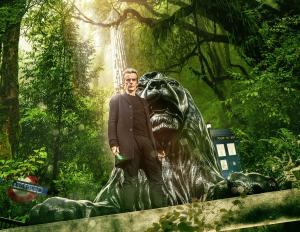
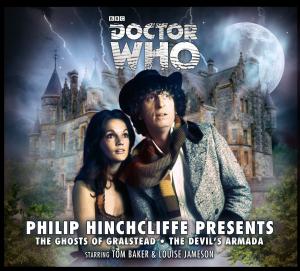

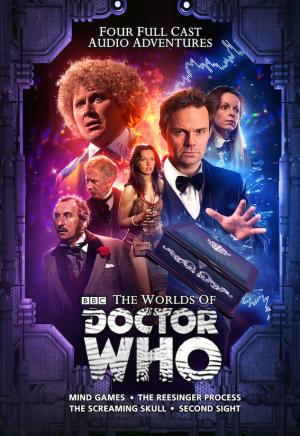
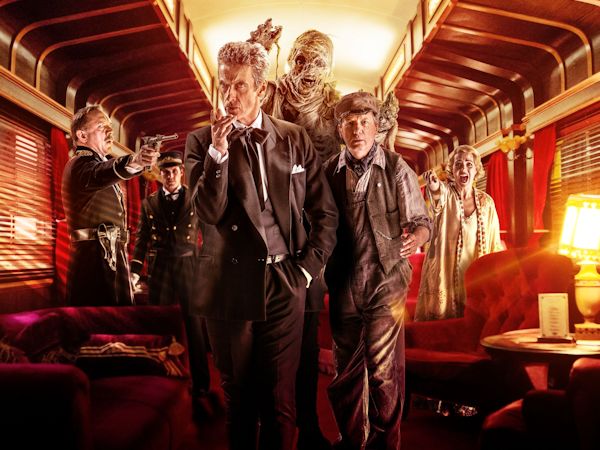
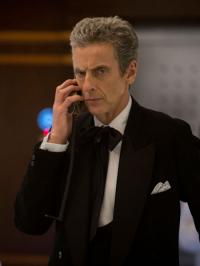 When it comes to actually saving the day, it turns out to be a pyrrhic victory. A good number of people get back home unscratched. Some of the apparently threatened passengers were only hard light holograms and so were never really at risk. But lives are lost and not just to the sinister bandaged antagonist. Other carriages with real living people are broken into and the bodies are left to float in space, most likely forever. And this is a direct consequence of the Doctor's efforts: he does get the right end result, but only after a fatal trial-and-error procedure. The Twelfth Doctor may not react too overtly to this disturbing turn of events but he surely knows he could have done something different.
When it comes to actually saving the day, it turns out to be a pyrrhic victory. A good number of people get back home unscratched. Some of the apparently threatened passengers were only hard light holograms and so were never really at risk. But lives are lost and not just to the sinister bandaged antagonist. Other carriages with real living people are broken into and the bodies are left to float in space, most likely forever. And this is a direct consequence of the Doctor's efforts: he does get the right end result, but only after a fatal trial-and-error procedure. The Twelfth Doctor may not react too overtly to this disturbing turn of events but he surely knows he could have done something different.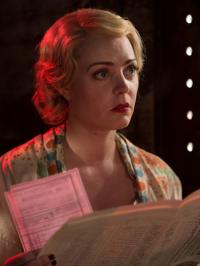 Yes, she did not storm off after all, despite all the signs being there. Clara perhaps more predictably is the voice of morality again; with her friend admitting he could not do anything until he had all the facts at hand. That they are still together is a result of their deeply held admiration and respect. Purely liking one another as most platonic friends doesn't come into it, but then how many friends are there who are come from different planets and have such contrasting life spans?
Yes, she did not storm off after all, despite all the signs being there. Clara perhaps more predictably is the voice of morality again; with her friend admitting he could not do anything until he had all the facts at hand. That they are still together is a result of their deeply held admiration and respect. Purely liking one another as most platonic friends doesn't come into it, but then how many friends are there who are come from different planets and have such contrasting life spans?
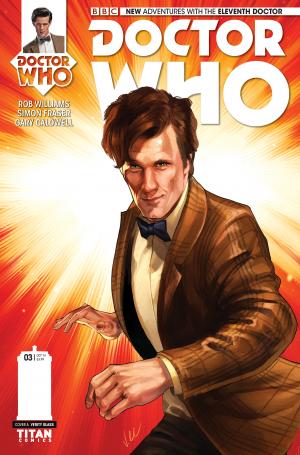

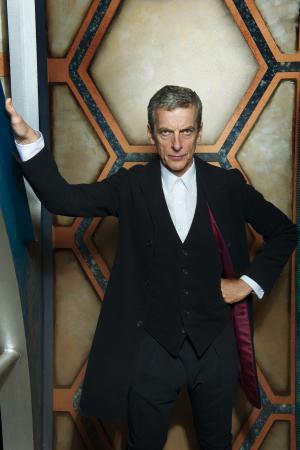 Before we get to
Before we get to 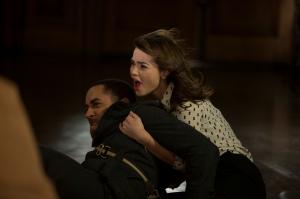 The Impossible Girl
The Impossible Girl
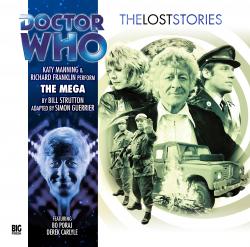
 Circle us on Google+
Circle us on Google+